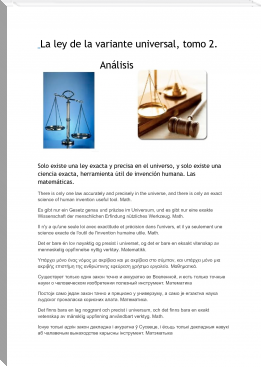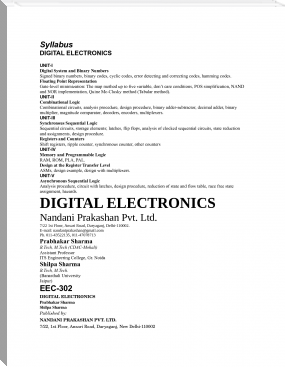Indian Army weapons by Demonsofdoubt (best summer reads .TXT) 📖

- Author: Demonsofdoubt
Book online «Indian Army weapons by Demonsofdoubt (best summer reads .TXT) 📖». Author Demonsofdoubt
Army placed an order for an additional 124 Arjun Mk-I tanks on 17 May 2010 and 124 Arjun Mk-II Tanks on 9 August 2010.[1][11][12][13]
The Arjun entered service with the Indian Army in 2004.[14] The tanks were first inducted into the 43rd Armoured Regiment, Indian Army Armoured Corps, which was later built up to regiment strength in 2009,[14] while the latest induction has been into the 75th Armoured Regiment on 12 March 2011.As part of improving the Arjun to the Mark-II variant, DRDO is continuing to develop new technology systems for MBT Arjun, in order to improve performance in areas like automatic target locating, tracking and destruction.[27] The Arjun MK-II variant is being developed in coordination with and with the involvement of the Indian Army and will feature several modifications that are being sought by it.[5]
DRDO is developing the Tank Urban Survival Kit which is a series of improvements to the Arjun intended to improve fighting ability in urban environments which includes defensive aids like laser warning, IR jammer, and aerosol smoke grenade system.[28][29]
CVRDE is in the process of developing tank simulators.[27]
DRDO is developing a Laser Warning Control System (LWCS) in cooperation with Elbit Limited of Israel to be equipped on the Arjun at regimental level trials with T-90s. The MCS is being developed by DRDO to help the tank reduce the threat of interference from all types of sensors and smart munitions of the enemy in the tank's systems. LWCS includes the defensive aids mentioned, and will help reduce the signatures of the tank in the battle field and improve its survivability. DRDO is also co-developing the and Mobile Camouflaging System (MCS) technology along with a Gurgaon-based private sector defence manufacturer Barracuda Camouflaging Limited.[citation needed]
The upgrade also includes a new improved 1500 hp engine.[30][31] An anti-helicopter round is under development as well.Armed with a 120 mm rifled gun, the Arjun is believed to be capable of firing APFSDS (Kinetic Energy) rounds, HE, HEAT, High Explosive Squash Head (HESH) rounds at the rate of 6-8 rounds per minute and the Israeli developed semi-active laser guided LAHAT missile. The LAHAT is a gun-launched missile and is designed to defeat both enemy armour and enemy combat helicopters. In addition, the Arjun is armed with a 12.7 mm AA machine gun and a 7.62 mm coaxial machine gun.The turret and glacis are heavily armoured and use "Kanchan" ("gold") modular composite armour. The Kanchan armour got its name from Kanchan Bagh, Hyderabad, where the Defence Metallurgical Research Laboratory (DMRL) is located.[38] The armour is made by sandwiching composite panels between Rolled Homogenous Armor (RHA) to defeat APFDS or HEAT rounds. During the trials in 2000, the Kanchan was able to withstand a hit from a T-72 at point blank range, and was able to defeat all available HESH and APFSDS rounds, which included the Israeli APFSDS rounds.[38] A new honeycomb design non-explosive and non-energetic reactive armour (NERA) armour is reportedly being tested on the Arjun. Nuclear, biological and chemical (NBC) protection equipment mine sweeps and an automatic fire fighting system. Electromagnetic-counter mine system can also be installed an electromagnetic pulse to disable magnetic mines and disrupt electronics before the tank reaches them signature reduction suite is also available for the is designed to reduce the probabilities of an object to be detected by Infrared, Thermal, Radar-Thermal, and Radar bands.[39]electro-optical/IR "dazzlers" Laser warning receivers,aerosol grenade discharging systems and a computerised control system.the tank has been 'painted' by a weapon-guidance laser and allows the crew to slew the turret to face the threat. The infrared jammer, laser rangefinders and designators navigation (Inertia/GPS), observation systems and sensors, real-time command and beyond-vision-range target engaging.advanced Fire Control System (FCS) linked to a millimetre band radar system laser range-finder and crosswind sensoronboard millimetre band radar, IR and radiometer sensors. The millimetre band radar system mounted on the turret is capable of operating as a Missile Approach Warning System (MAWS) Visual and Infrared Screening Smoke also has a Radar Warning Receiver (RWR) and radar jammer. Four all-bearing Laser warning receivers (LWR)The new fire-control system enables the Merkava to shoot down helicopters and find and destroy armoured attack helicopters Battle Management System Battle Management System panoramic sight The commander's station is equipped with eight periscopes for 360° vision.ommander's independent thermal viewer, weapon station, position navigation equipment, and a full set of controls and displays linked by a digital data bus.improved fire control system.[18] The System Enhancement Package (SEP) added digital maps,improved cooling system to compensate for heat generated by the additional computer systems.FBCB2 capabilities,FBCB2 capabilities,New radars,EW Systems,C4ISR Systems,gun control system (GCS).[9]Integrated Battlefield Management System" (IBMS) and Active protection System.[39]
A Mobile Camouflage System has been developed and integrated into the Arjun as part of the 'Development of Defensive Aids System' project.[40] in collaboration with Barracuda Camouflage Limited,to reduce the vehicle signature against all known sensors and smart munitions.
An Advanced Laser Warning Countermeasure System (ALWCS) for the fire control system has been developed. This consists of a laser warning system, Infra-Red (IR) jammer and aerosol smoke grenade system. This is being developed jointly with Elbit Systems Limited of Israel. The ALWCS has been integrated on Arjun MBT and trials have been carried out.
Although the BMP-1 was a revolutionary design, its main armament, the 2A28 Grom and the 9S428 ATGM launcher capable of firing the 9M14 Malyutka (NATO: AT-3A Sagger A) and the 9M14M Malyutka-M (NATO: AT-3B Sagger B) ATGMs, quickly became obsolete. Therefore the Soviet Union decided to produce an updated and improved version of the BMP-1. The main emphasis was put on improving the main armament. In 1972 work got underway to develop an improved version of the BMP-1.
During its combat debut in the Yom Kippur War, Egyptian and Syrian BMPs proved vulnerable to .50 calibre machinegun fire in the sides and rear, and to 106 mm recoilless rifles. The 73 mm gun proved inaccurate beyond 500 meters, and the AT-3 Sagger missile could not be guided effectively from the confines of the turret.
Several Soviet technical teams were sent to Syria in the wake of the war to gather information. These lessons combined with observations of western AFV developments resulting in a replacement program for the original BMP in 1974. The first product of this program was the BMP-1P upgrade intended as a stopgap to address the most serious problems with the existing design. Smoke grenade launchers were added to the rear of the turret and the manually guided AT-3 Sagger missile system was replaced with the semi-automatically guided AT-4 Spigot and AT-5 Spandrel system. The BMP-1P was in production by the late 1970s and existing BMP-1s were gradually upgraded to the standard during the 1980s.
The main armament is a stabilized 30 mm 2A42 autocannon with dual ammunition feeds which provide a choice of 3UBR6 AP-T and 3UOR6 HE-T / 3UOF8 HE-I ammunition. The gun has a selectable rate of fire, either slow at 200 to 300 rounds per minute or fast at 550 rounds per minute. The original stabilization provides reasonable accuracy up to a speed of about 35 kilometres per hour.
The AP-T ammunition can penetrate 15 millimetres of armour at sixty degrees at 1,500 meters, while a new APDS-T tungsten round can penetrate 25 millimetres at the same distance. A typical ammunition load is 160 rounds of AP ammunition and 340 rounds of HE ammunition. The ammunition sits in two trays located on the turret floor rear. The gun can be fired from either the commander or the gunners station.
The commander's 1PZ-3 sight is specifically designed for anti-aircraft operation and combined with the high maximum elevation of 74 degrees, it allows the 30 mm cannon to be used effectively against helicopters and slow flying aircraft. The turret traverse and elevation are powered and it can traverse 360 degrees in 10.28 seconds and elevate through 74 degrees in 12.33 seconds.
Reloading the BMP-2's 30 mm cannon can be somewhat problematic, and can take up to two hours, even if the ammunition is prepared. Additionally the cannon is normally only used on the slow rate of fire, otherwise fumes from the weapon would build up in the turret faster than the extractor fan can remove them.[citation needed]
The effective range of the 30 mm cannon is up to 1500 metres against armor, 2500 metres against ground targets, and 3,000 metres against air targets.
A coaxial 7.62 mm PKT machine gun is mounted to the left of the 30 mm cannon, and 2,000 rounds of ammunition are carried for it. On the roof of the turret is an ATGM launcher, on Russian vehicles this fires AT-5 Spandrel missiles, but on export models it normally fires AT-4 Spigot missiles. A ground mount for the missile is also carried, allowing it to be used away from the vehicle. The missiles are a substantial improvement on the AT-3 Sagger missiles used on the BMP-1, in both range and accuracy.
Behind the turret is the troop compartment which holds six troops, the seventh sits just behind the driver. The troops sit back to back, along the centre of the vehicle. Down each side of the compartment are three firing ports with periscopes. Access to the compartment is by the two rear doors, which also hold fuel tanks, both doors have integral periscopes and the left door has a firing port.
In addition to the main weapons it can carry a man portable surface to air missile launcher and two missiles, and an RPG launcher and five rounds. The vehicle is fitted with a PAZ overpressure NBC system and fire suppression system, and carries a GPK-59 gyrocompass.
NAMICA (Nag Missile Carrier) is a tank destroyer built for the army. It is equipped with a thermal imager for target acquisition. NAMICA is a modified BMP-2 ICV produced as "Sarath" in India. The carrier weights 14.5 tonnes in full combat load and is capable of moving 7 km/h in water. The carriers are capable of carrying 12 missiles with 8 in ready-to-fire mode. The NAMICA carrier was put through transportation trials covering 155 km during 2008 summer trials
Nag was test fired as part of user validation trials on July 16, 2010 and was destined to be inducted into the Indian army. [6] But the final test of the missile with certain modifications to launch pad and the target settings with respect to range, failed in user trials conducted in August 2012 in Rajasthan.
Nag was successfully test fired for the second day in a row on August 8, 2008 from the Test Range at Pokhran, Rajastan, marking the completion of the developmental tests. The DRDO and Indian Army plan to hold the user trial shortly.[7] These trials will be the final trials to decide the induction of the missiles.[8] The NAMICA carrier successfully completed its amphibious trials in the Indira Gandhi Canal at Rajastan on August 8, 2008.[9]
The Indian Army has placed an order of 443 Nag missiles and 13 Namicas for introduction in the next 3 years.[2] Nag will be the first weapon of such kind that will be inducted into the army by November–December 2009. The Army urgently needs the more advanced Nag to improve kill probability as the missile using a high explosive warhead to penetrate the armor in modern tanks.[7]
As part of the winter trial of the final user trials the Nag missile was tested successfully by the Indian Army on December 26, 2008. Before the induction of the missile into service and the summer trials were carried out in June 2009.[10]
During the winter trials the Nag missile zeroed in on the precise location of the target
 The desire to acquire knowledge about the surrounding world and human society is quite natural and understandable for a person. Life is so developed that an uneducated person will never occupy a high position in any field. Humanity in its mass, and each person individually, develops objectively, regardless of certain life circumstances and obstacles, but with different intensity. The speed of development depends on the quality of training.
The desire to acquire knowledge about the surrounding world and human society is quite natural and understandable for a person. Life is so developed that an uneducated person will never occupy a high position in any field. Humanity in its mass, and each person individually, develops objectively, regardless of certain life circumstances and obstacles, but with different intensity. The speed of development depends on the quality of training.




Comments (0)